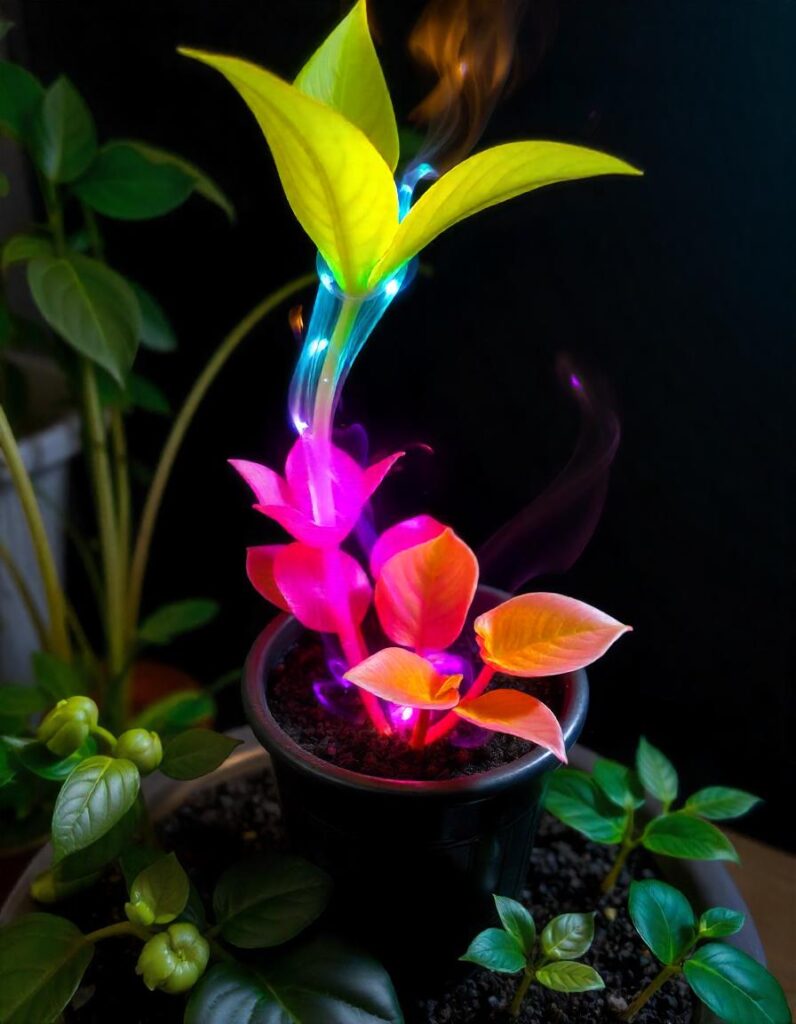The Magic Plant: Discovering the Enchanting World of Nature’s Wonders
Plants have always fascinated humanity. From ancient times, we have used them for medicine, food, and even spiritual purposes. Among the vast variety of flora, some plants hold a unique allure, often referred to as “magic plants.” These special plants are believed to possess extraordinary qualities that go beyond their natural function. They may heal, protect, or even influence the mind in profound ways. In this article, we will explore the world of magic plants, their uses, history, and the science behind their mystical properties.
Table of Contents

1. What Is a Magic Plant?
A magic plant is often defined as any plant with properties that are believed to have supernatural or mystical effects. These plants are typically used in folk medicine, spiritual rituals, and various forms of alternative healing. While some people may associate magic plants with myth and folklore, others see them as powerful tools for wellness and transformation.
The term “magic” in this context often refers to the plant’s ability to affect the human body and mind in unusual ways. These effects can range from calming the nervous system to inducing altered states of consciousness.
2. History of Magic Plants
The use of plants for magical purposes dates back thousands of years. Ancient civilizations like the Egyptians, Greeks, and Native Americans have long revered plants for their healing and mystical properties. In many cultures, shamans and healers used magic plants in rituals to communicate with the spirit world, protect their communities, and treat various ailments.
For example, in ancient Egypt, the Blue Lotus was considered sacred and was often used in religious ceremonies. It was believed to promote a sense of peace and well-being, as well as enhance spiritual awareness.
In Europe, during the Middle Ages, herbs like mandrake and belladonna were used by witches and healers for their psychoactive properties. These plants were believed to grant the user access to other realms of consciousness and power.
3. Common Types of Magic Plants
There are countless plants across the world that are considered magical, each with its own unique properties. Below are some of the most well-known magic plants and their traditional uses:
A. Ayahuasca
Originating from the Amazon rainforest, Ayahuasca is a powerful plant brew made from the Banisteriopsis caapi vine and the Psychotria viridis leaf. It is used by indigenous tribes in South America for spiritual healing and rituals. The brew induces intense visions and is said to provide insights into one’s life, the universe, and the spirit world.
B. Peyote
Peyote is a small cactus found in the southwestern United States and Mexico. It contains mescaline, a psychoactive alkaloid that induces altered states of consciousness. Peyote has been used by Native American tribes for centuries in spiritual ceremonies to connect with the divine and gain spiritual insight.
C. Mandrake
Mandrake is a plant native to the Mediterranean region. In European folklore, it was believed that the mandrake root could scream when pulled from the ground, and its cry would drive people mad. Mandrake was traditionally used in potions and rituals for protection, fertility, and love.
D. Salvia Divinorum
Salvia Divinorum is a member of the mint family, native to Mexico. It has been used by the Mazatec people for healing and divination purposes. When consumed, Salvia induces vivid hallucinations and altered perceptions of reality, often used in shamanic rituals to communicate with spirits.
E. Wormwood
Wormwood is a plant that has been used for centuries in both medicine and magic. It is an essential ingredient in absinthe, a drink that has historically been associated with creative inspiration and altered states of mind. In folk medicine, wormwood is used for its digestive and anti-inflammatory properties.
4. The Science Behind Magic Plants
While the mystical properties of magic plants have often been shrouded in folklore, modern science has begun to unravel the chemical compounds that give these plants their powerful effects. Many magic plants contain psychoactive substances that affect the brain and nervous system, leading to changes in perception, mood, and consciousness.
For example, Ayahuasca contains DMT (Dimethyltryptamine), a powerful psychedelic compound that interacts with serotonin receptors in the brain, leading to intense visual and emotional experiences. Similarly, the mescaline in Peyote acts on the brain’s serotonin and dopamine systems, altering perception and producing hallucinations.
These compounds have been studied for their potential therapeutic benefits. Researchers are exploring how substances like psilocybin (found in magic mushrooms) and MDMA (related to compounds found in some magic plants) can be used to treat mental health conditions like depression, PTSD, and anxiety.
5. Ethical Considerations and Sustainability
As the popularity of magic plants grows, so do concerns about sustainability and ethical use. Many magic plants are harvested from delicate ecosystems, and over-harvesting can threaten their survival. For example, Ayahuasca and Peyote are both under threat due to increased demand from the global wellness industry.
It is crucial to approach the use of magic plants with respect and mindfulness. This includes supporting sustainable harvesting practices and ensuring that indigenous communities benefit from the growing interest in these plants. Additionally, understanding the cultural significance of these plants can prevent the exploitation of indigenous traditions.
6. Magic Plants in Modern Wellness
Today, magic plants are making their way into mainstream wellness practices. From herbal teas to essential oils, many products on the market claim to harness the power of plants for healing and relaxation. However, it’s essential to approach these products with caution and to seek guidance from knowledgeable practitioners, especially when dealing with powerful psychoactive substances.
In recent years, the practice of microdosing—taking small, sub-perceptual doses of magic plants like psilocybin mushrooms—has gained popularity for its potential to enhance creativity, focus, and emotional well-being. While research is still in its early stages, many users report positive effects from this practice.
7. Conclusion: The Magic of Nature
Magic plants remind us of the deep connection between humans and nature. Whether used for healing, spiritual growth, or personal transformation, these plants offer a glimpse into the mysteries of the natural world. As science continues to explore the potential of magic plants, it is vital to honor their ancient roots and approach their use with reverence and responsibility.
The magic of plants is not just in their ability to heal the body but also in their power to open the mind to new possibilities. Whether through scientific study or traditional practices, these extraordinary plants continue to inspire wonder and curiosity about the world we live in.
By integrating knowledge from various fields, including botany, pharmacology, and anthropology, we can better appreciate the rich history and potential of magic plants. Whether you are drawn to their healing powers, spiritual significance, or simply their beauty, these plants remind us of the extraordinary power of nature.
